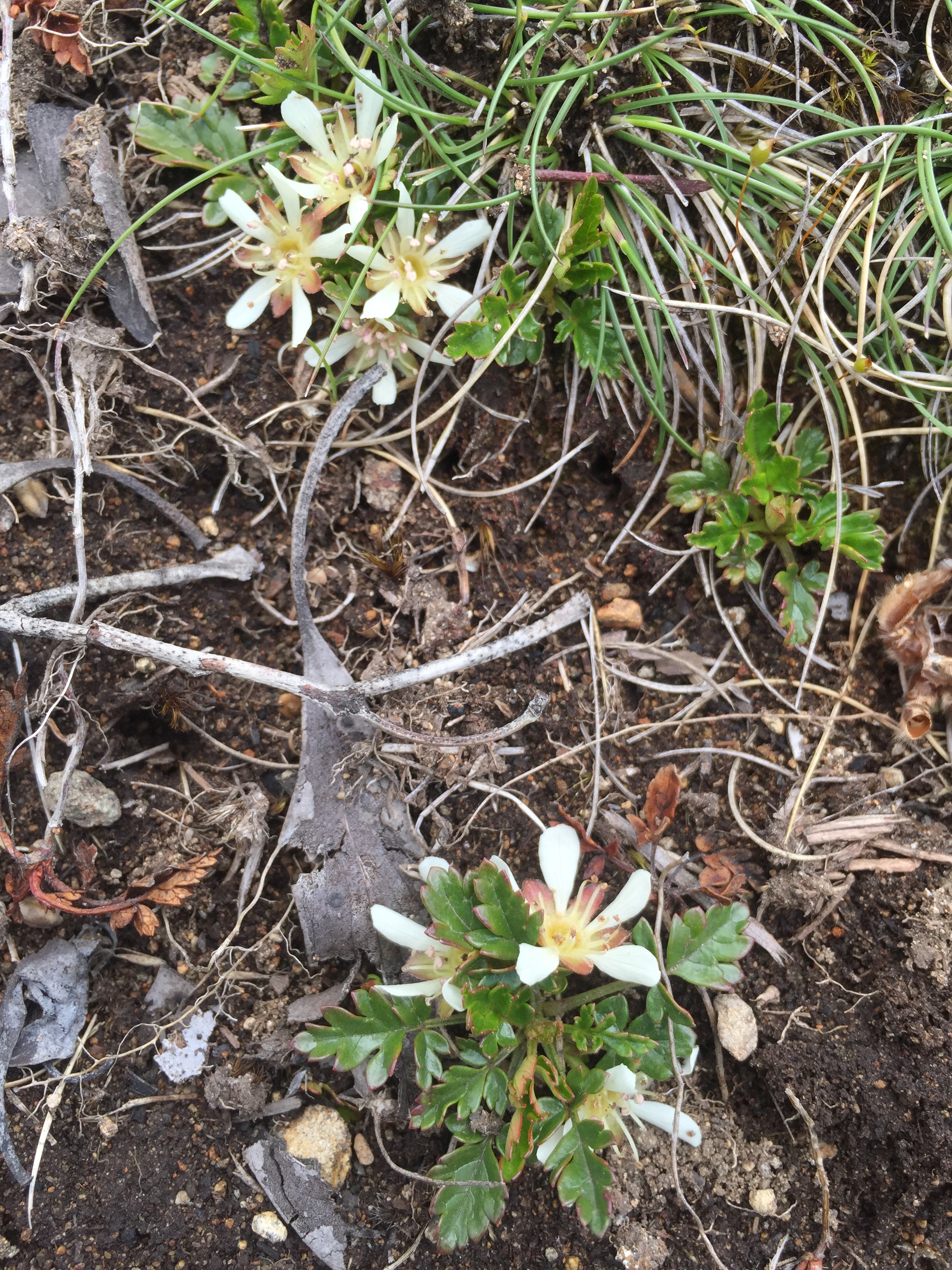Scientific Name: Rubus gunnianus Endemic Having a natural distribution confined to a particular geographic region
Common Name: alpine raspberry
Family Classification (Clade): Eudicots
Family: Rosaceae
Form Description: Matt-forming perennial herb, with rosettes connected by trailing stems, often below the soil. May spread to 60-80 cm in diameter.
Height (m): 0.6 – 0.8
Flowers: Single cream flowers, 2 cm in diameter, on short stalk emerging from the centre of the rosette.
Fruit: Drupelet – soft and red when mature.
Municipality
Plant Communities
Habitat Notes
Common and widespread in all alpine vegetation types except aquatic, at altitudes of 900-1500m. Grows in most soils.
Site Tolerance
Exposed, Moist, Rocky, Shady, Windy, Moist
Soil Tolerance
Clay, Fertile, Loam, Nutrient-poor, Sandy, Well-drained
Frost Tolerance
Hardy
General Notes
Likely to get blackberry rust when grown at lower altitudes.
Propagation Calendar
-
Flowering Month
Jan Feb Mar Apr May Jun Jul Aug Sep Oct Nov Dec -
Seed Collecting Month
Jan Feb Mar Apr May Jun Jul Aug Sep Oct Nov Dec -
Sowing Month
Jan Feb Mar Apr May Jun Jul Aug Sep Oct Nov Dec -
Cutting Month
Jan Feb Mar Apr May Jun Jul Aug Sep Oct Nov Dec
Propagation Method
Seed Information
Seed Collection
Collect by hand; gloves are advised as plants have hooked prickles. Soak till soft, then mash to remove flesh before storing.
Seed Treatment Method
Cold Some species require exposure to cold before they germinate. These species are best sown in early winter and left to germinate in a shade house.
Seed Storage Life
Short
Seed Treatment Notes
Remove the flesh from the fruit and sow seed fresh. Seeds do not germinate readily, but may respond to stratification.
Cutting & Division Information
Can be grown from semi-hardwood and root cuttings or by division.
